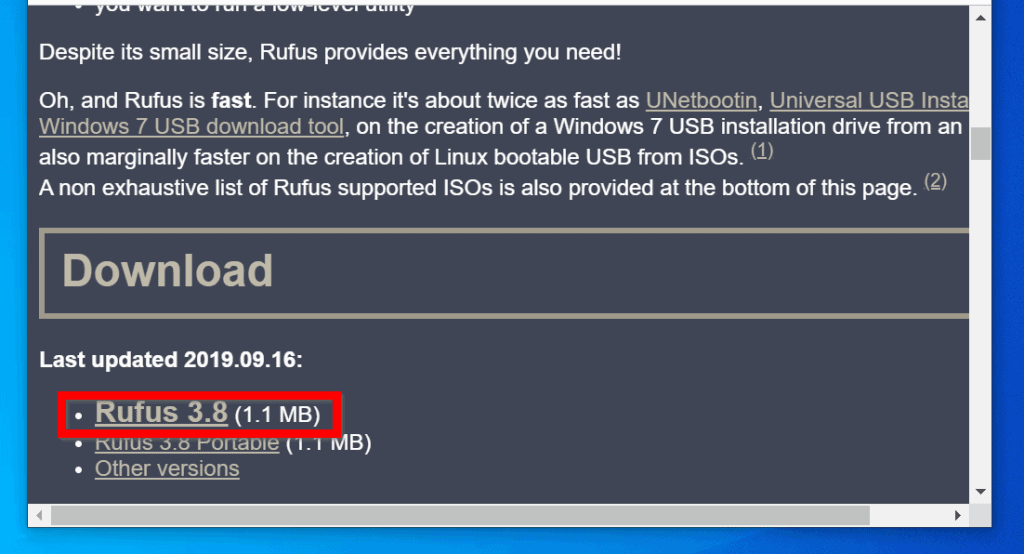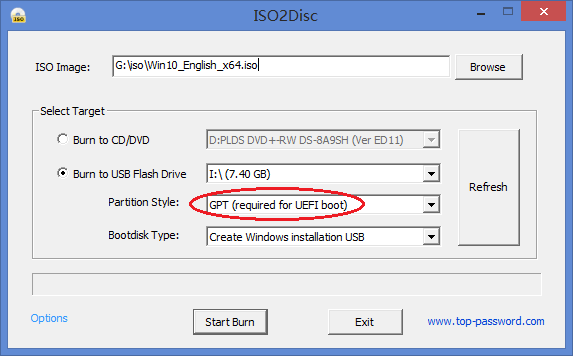
- #Windows 10 write iso to usb how to#
- #Windows 10 write iso to usb for windows 10#
- #Windows 10 write iso to usb windows 10#
- #Windows 10 write iso to usb Pc#
#Windows 10 write iso to usb windows 10#
Type recimg -CreateImage DriveLetter>:\Refreshimage and press Enter. (change the USBDriveLetter with your USB drive letter)īest Way to Create System Image Windows 10 on USB Press Windows + X key conbination on the desktop and select Windows Powershell (Admin). If not, please try the following steps and run commands as administrator.Ĭreate a folder named Refreshimage in the USB drive. Then it will create system image on USB flash drive successfully. To find it, go to Start > Settings > System > Storage, scroll down to Storage Management and select Advanced storage settings > Backup options > Go to Backup and Restore (Windows 7). ★ Tip: This method also works for Windows 11, but the location of Backup and Restore (Windows 7) has a little different. Confirm the backup settings and click Start backup to backup Windows 10 to USB drive. ★ Tip: Make sure you have plugged the USB flash drive into the computer the program will detect the device automatically.Ĥ. Select On a network location, click Select., input the network location of your USB flash drive (\\IP\SharedFolderName, like \\192.168.0.58\My Backups) and the network credentials, click OK to save the Windows 10 system backup.

Click the Create a system image option on the left side.ģ. Type backup and restore in Windows 10 search box, then choose Backup and Restore (Windows 7), and then click Go to Backup and Restore (Windows 7).Ģ. Just do as follows to create Windows 10 system image on USB drive.ġ. And choose On a network location while choosing the destination to save the Windows 10 system image.
#Windows 10 write iso to usb how to#
How to fix? Here is the solution: create a folder on your USB drive, and share the folder with yourself (your current account). Even it’s formmated with NTFS, there is a chance to get the error the drive is not a valid backup location. How to Fix The Drive is Not A Valid Backup LocationĪs a matter of fact, you can use Windows 10 built-in tool - Backup and Restore (Windows 7) to create a system image backup for Windows 10, but if you choose the USB drive as destination, you might find create a system image not working for USB drive and get the error: This drive cannot be used to store a system image because it is not formatted with NTFS if your USB is formated to FAT32.
#Windows 10 write iso to usb for windows 10#
Now you have to create system image on USB for Windows 10 to restore Windows 10 safely, because creating Windows 10 system image on internal hard disk is a risk operation. The same is true for the latest system - Windows 11.


However, sometimes the Windows 10 recovery environment missing, and you could not restore your Windows 10. The recovery partition can troubleshoot and fix the system problems, then restore your computer.
#Windows 10 write iso to usb Pc#
Or your PC might have a recovery image designed for computer reset or refresh, which is typically 3 to 6 GB in size and stored on an independent recovery partition. Hard disk has a recovery partition when Windows 10 installed, around 450MB, which stores the OS, drivers, applications, and default settings for operating system repair. Usually, you have two ways to restore Windows 10 back to normal if system failure: Recovery Partition, and the Windows 10 System image. Why Create Windows 10 System Image on Flash Drive?


 0 kommentar(er)
0 kommentar(er)
